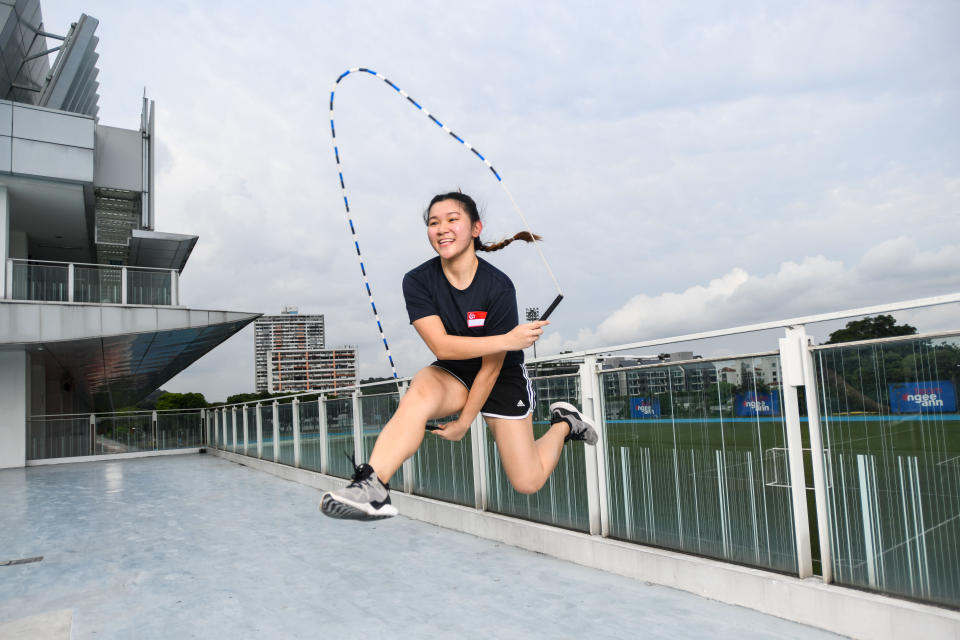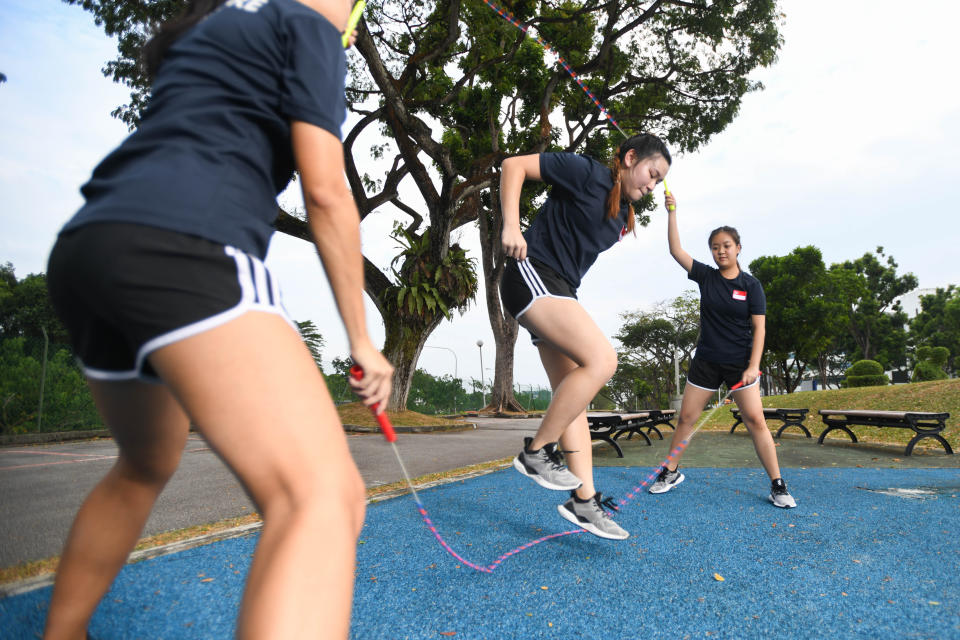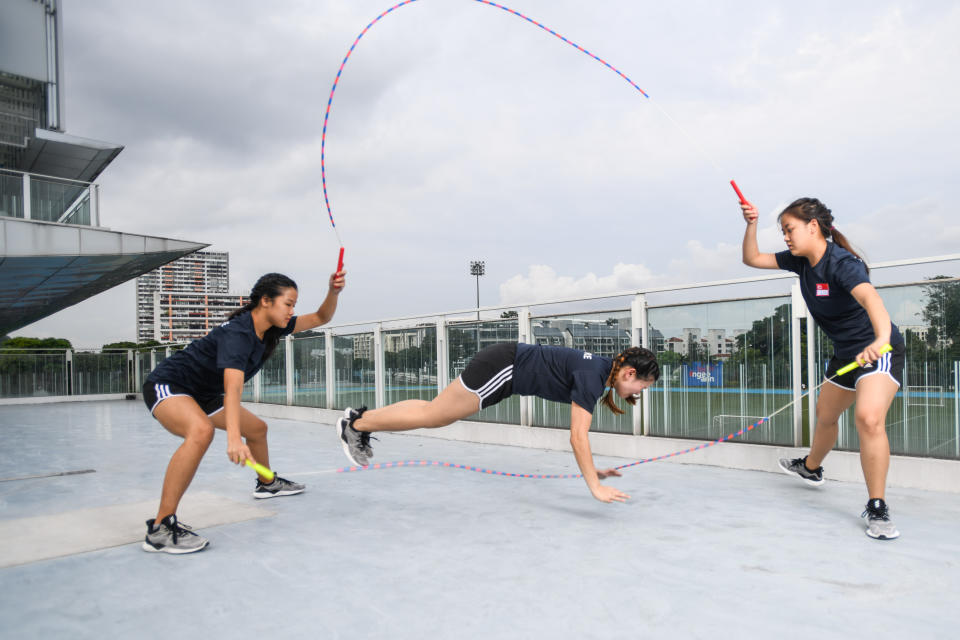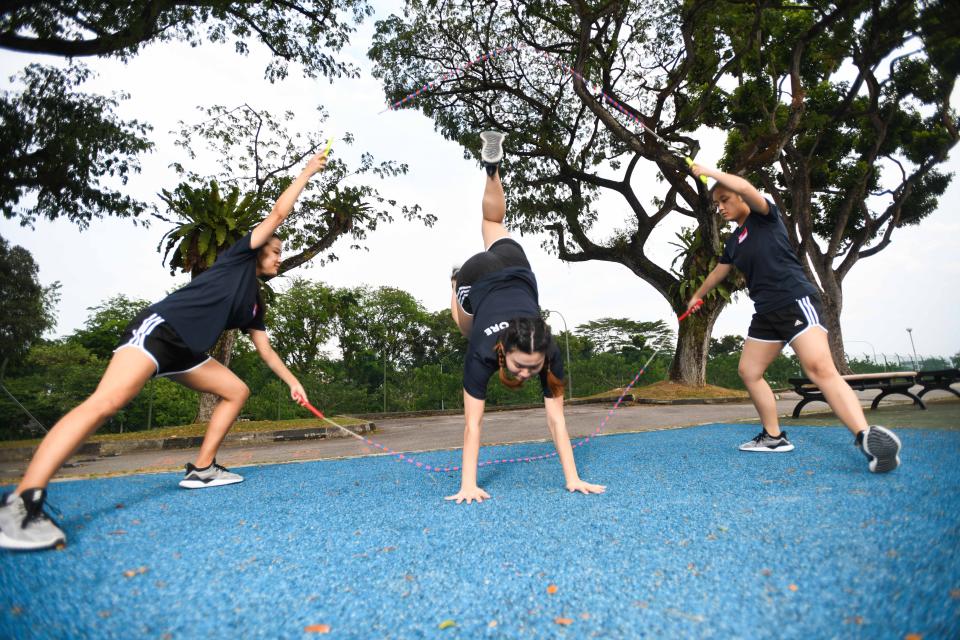Why I Play series: Rope skipper Chang Chu Hua
“Why I Play” is a fortnightly series every Thursday showcasing the stories of people who enjoy playing sports. Want to see your sport featured? Let us know via Facebook or Twitter.
Text by Iman Hashim. Video/Photo by Stefanus Ian
While most people see rope skipping as just a form of cardio exercise or a childhood hobby, Chang Chu Hua does it competitively, after picking it up as a co-curricular activity (CCA) back in primary school.
Chang continues pursuing the sport with two clubs, Team Skipaholics and Rope Skipping Association Singapore, where she is also a coach. The Nanyang Technological University undergraduate has also taken part in international competitions such as the FISAC-IRSF Rope Skipping World Championships.

Q: How did you get involved in rope skipping?
A: Rope skipping was my primary school CCA. I started when I was in Primary Three and grew to like the sport a lot. In the CCA, I was involved in competitive rope skipping, and represented the school for performances at various events.
Currently, I am a member of Team Skipaholics and Rope Skipping Association Singapore. We represent Singapore for international competitions and do performances locally to spread the joy of the sport.
Which muscle groups are most involved in rope skipping? Which part of your body aches the most after a training session and why?
In rope skipping, almost every muscle group in the body is engaged. Leg muscles such as the quadriceps and calves, as well as shoulder muscles, are most involved since they are required to jump and turn the rope.
Because I have been skipping for almost nine years now, my leg muscles are almost very used to the sport. I do ache in the quadriceps sometimes but my back muscles tend to ache more because of new stunts that we often try during training.
Would you consider rope skipping a sport or a performing art? What are the biggest misconceptions people have of rope skipping?
Rope skipping is a sport that can be incorporated as a performing art.
In competitive rope skipping, the sport is very technical and is judged by how fast you are or how well you can execute the skills. Every rope skipper aims to be the fastest in speed events, or to score the highest points in creative events.

In rope skipping performances, the songs used are very catchy, and the routines are choreographed to engage the audience and impress them with creative stunts or dance moves. It gives a completely different vibe – one that makes people want to join in and skip together.
Many people think that rope skipping is plainly just rope skipping, like those in Crossfit. It is a popular form of cardio, but rope skipping is more than just jumping for 20 minutes. We can get creative with the rope, such as adding more ropes to our skipping. We can also incorporate dance and gymnastics to it.
It is a sport that does not only involve an individual, but a group of people can all skip together as well.
In pursuing competitive rope skipping, what has been your most memorable experience?
My most memorable experience in competitive rope skipping was during the 2018 FISAC-IRSF Rope Skipping World Championships, where the adrenaline from the competition got me to push myself beyond my usual record.
I didn’t think much except to give it my best. I would always remember the contentment when I completed an event, knowing I did my best and I did well, leaving the competition ground with no regrets.

Your most heartbreaking?
During the few months of preparation before the competition, there was a time when the team felt down because trainings weren’t going well. Because we choreograph our own routines, monitor our own progress and train ourselves, it was frustrating for us when a problem arose and we didn’t know how to solve it.
It was a period when there was a lot of trial-and-error, and the atmosphere during training wasn’t the most encouraging. However, I am glad that our team was able to manage the problem and clear it before the competition.
Share an inspiring story you have of a tournament or an experience with teammates that made you love rope skipping even more.
I find that finishing the routine during competition, something which our team practised for months, was the most fruitful and motivating factor. It’s the feeling of finally showcasing what we worked on to everyone, and to look back at how far we came and improved along the way.
It is a very satisfying feeling that makes me want to do it and experience it again. The completion of routine with my teammates makes me love the sport even more.
Was there a time you felt like walking away from this sport? What made you stay?
It is not easy to be in a sport involved in competitions and performances, while studying full-time. There were a few times when I couldn’t handle the workload and had to take a break from the sport.

However, I love the sport so much that I don’t think I would walk away so easily. There is still so much to do for the sport in Singapore – to spread the joy of rope skipping to everyone. I would stay in the sport for as long as I can.
Worst injury experienced?
A sprained ankle was the worst, sustained when I accidentally fell from doing acrobatics. It was the time that got me most worried because the ankles are really important in rope skipping. I wasn’t able to execute the higher-level skills because my ankle was too weak to absorb the impact of the jumps and landings. I have properly rested and it feels alright now, but I have to be extra careful with them.
What life lessons has rope skipping taught you?
Rope skipping has taught me perseverance and patience in learning the sport. It may take a few weeks and even months to get a skill right, but it is important to keep trying because eventually, practice makes perfect. Also, I have learnt to always seek improvement in myself and constantly learn from others.
How can people get involved if they’re interested in this sport?
If anyone is interested in the sport, they can reach us on social media at Team Skipaholics. We do conduct classes for anyone who wants to learn basic rope skipping, and also workshops for team bonding. We also update our social media if there are performances or events coming up.
Can you tell me in one sentence why you love this sport.
I love the satisfying sound of the rope and the exhilarating feeling when I jump up high, and this is why I skip.



